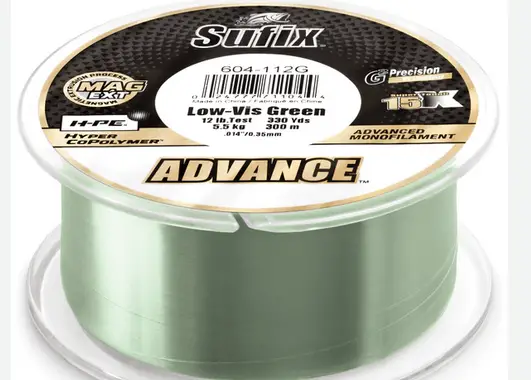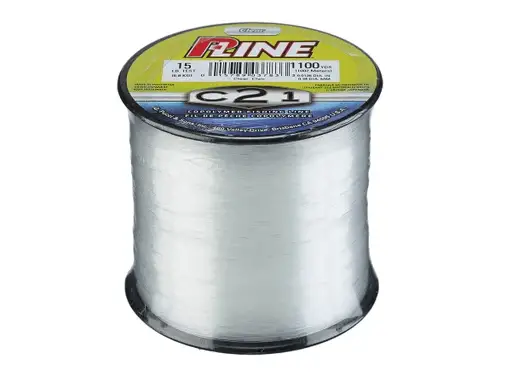Copolymer fishing line is a type of fishing line that is made from a combination of two or more different polymers. It offers superior strength, durability, and sensitivity, making it a popular choice among anglers.
Copolymer fishing line is known for its low stretch, high abrasion resistance, and excellent knot strength, making it suitable for various fishing techniques and conditions. It is also less visible in the water, allowing for a more natural presentation. Whether you are a professional or recreational angler, copolymer line can enhance your fishing experience and increase your chances of success.
Benefits Of Copolymer Fishing Line
When it comes to fishing line options, copolymer fishing line stands out for its superior performance and unmatched benefits. Made from two or more different polymers, copolymer line combines the best characteristics of each material to deliver a line that offers exceptional strength and durability. In this article, we will explore the various advantages of using copolymer line, including its high knot strength, low memory, and impressive abrasion resistance.
High Knot Strength
One of the key benefits of copolymer line is its high knot strength, which ensures that your knots will stay secure even when battling with hard-fighting fish. The unique combination of polymers used in copolymer line gives it the ability to form strong and reliable knots, reducing the risk of break-offs and increasing your chances of landing that prized catch. Whether you are using a clinch knot, improved clinch knot, or any other popular fishing knots, copolymer line will hold up under pressure, offering you peace of mind and greater confidence on the water.
Low Memory
Copolymer fishing line boasts an impressive resistance to memory, meaning it has the ability to lay flat and retain its original shape without forming curls or kinks. This characteristic is particularly advantageous as it minimizes line twists and tangling, allowing for smoother and more accurate casts. With copolymer line, you can say goodbye to frustrating line tangles and spend more time focusing on your fishing technique. Its low memory also ensures that the line flows effortlessly through your fishing rod guides, providing optimal casting performance and reducing any drag that might hinder your angling experience.
Abrasion Resistance
Another notable benefit of copolymer fishing line is its exceptional abrasion resistance. When fishing in rugged or abrasive environments, such as rocky areas or areas with submerged vegetation, copolymer line proves to be highly durable, withstanding the wear and tear typically experienced in these conditions. Its ability to resist abrasion helps to prevent nicks, cuts, and fraying, prolonging the life of your fishing line and saving you from frequent line replacements. With copolymer line, you can fish in confidence, knowing that your line can handle the toughest challenges.
Best Copolymer Fishing Line
Copolymer fishing line offers a combination of strength, flexibility, and knot strength, making it an ideal choice for anglers. With its superior abrasion resistance and low memory, copolymer line ensures greater casting distance and smooth retrieval.
Introduction
When it comes to choosing the right fishing line, there are many options available in the market. One such option is copolymer fishing line. Copolymer line is known for its unique blend of materials, flexibility, and high sensitivity. In this section, we will discuss the characteristics of copolymer line in detail.
Blend Of Materials
A copolymer fishing line is created by blending two or more types of materials together. This blend of materials results in a fishing line that combines the best qualities of each component. Typically, copolymer fishing lines are made by combining different types of nylon polymers, which helps to enhance the strength and durability of the line.
Copolymer lines also incorporate fluorocarbon into their composition, which adds another layer of strength and abrasion resistance. This blend of materials makes copolymer lines highly resistant to UV rays, water absorption, and chemicals, ensuring that they can withstand the harsh conditions of fishing.
Flexibility
Flexibility is another important characteristic of copolymer fishing line. The blend of materials used in copolymer lines allows them to have a superior degree of flexibility compared to other types of fishing lines.
This flexibility comes in handy when it comes to casting and retrieving. It allows the line to smoothly flow through the guides of the fishing rod, enabling longer and more accurate casts. The flexibility of copolymer line also ensures that it can easily handle sudden changes in tension without breaking, making it ideal for battling strong and aggressive fish.
High Sensitivity
Copolymer fishing lines are known for their high sensitivity, which is a crucial aspect when it comes to detecting even the slightest nibble or bite. The blend of materials used in copolymer lines amplifies their sensitivity, allowing anglers to feel every movement or subtle change underwater.
This high sensitivity enables anglers to detect strikes more accurately and quickly, increasing their chances of a successful catch. With copolymer lines, anglers can stay in tune with the underwater environment and make the necessary adjustments to their fishing technique.
Types Of Copolymer Fishing Line
Copolymer lines are popular among anglers due to their versatility and strength. These lines consist of two or more distinct polymers blended together, resulting in a combination of desirable properties. There are different types of copolymer lines suitable for various fishing conditions. Each type offers unique advantages that cater to different fishing techniques. Let’s explore the three main types of copolymer fishing lines
Monofilament Copolymer Line
Monofilament copolymer line is a popular choice among anglers for its excellent knot strength and abrasion resistance. This type of line is made from a single strand of copolymer material, offering anglers a balance between strength and flexibility. Monofilament copolymer lines are less visible underwater, making them ideal for clear water fishing or situations where fish are line-shy. The low memory of this line type allows for easy casting and reduces the chances of line tangles. Additionally, monofilament copolymer lines have good shock absorption properties, providing anglers with better control over their fishing experience.
Fluorocarbon Coated Copolymer Line
Fluorocarbon coated copolymer line combines the best qualities of copolymer and fluorocarbon fishing lines. This type of line consists of a copolymer core coated with a thin layer of fluorocarbon. The copolymer core provides excellent strength and knotability, while the fluorocarbon coating enhances the line’s invisibility underwater. The low stretch and high sensitivity of fluorocarbon coated lines allow anglers to detect even the slightest bites. The added abrasion resistance from the fluorocarbon coating makes this line type suitable for fishing around structure or in areas with sharp objects.
Copolymer Braided Line
Copolymer braided line is a hybrid fishing line that combines copolymer and braided line technology. This line type offers anglers the best of both worlds by providing the strength and sensitivity of braided lines with the manageability and knotability of copolymer fishing lines. Copolymer braided lines are known for their high knot strength and low diameter, allowing for increased line capacity on the reel. The thin diameter of this line type also results in less friction in the water, enabling easier and longer casts. Anglers who prefer fishing in heavy cover or rough conditions often opt for copolymer braided lines due to their superior strength and durability.
Tips For Using Copolymer Fishing Line
Fishing with copolymer line can greatly improve your chances of landing that prized catch. Copolymer line is a popular choice among anglers due to its exceptional strength, durability, and low visibility in the water. However, using the right techniques and strategies can make a significant difference in your fishing success. In this post, we will discuss some valuable tips to help you get the most out of your copolymer line.
Proper Knot Tying
Tying the right knot is crucial when using copolymer fishing line, as it ensures a strong and secure connection between your line and the hook or lure. The improved knot strength provided by copolymer line allows you to use a variety of fishing knots, such as the Palomar knot, clinch knot, or uni knot. These knots provide excellent strength and reliability, minimizing the chances of your line breaking or slipping during a fight with a fish. It’s essential to practice tying these knots until you can tie them confidently and quickly.
Regular Line Inspection
Regularly inspecting your copolymer fishing line is essential to detect any signs of wear or damage. Before each fishing trip, carefully examine the entire length of your line for any cuts, abrasions, or fraying. Weak points in the line can lead to breakages and lost fish. If you notice any damage, it is crucial to re-spool your reel with fresh copoly mer fishing line. Moreover, regularly inspecting your line during fishing can help you catch any issues early on before they have a chance to ruin your fishing experience.
Smooth Line Retrieval
When using copolymer fishing line, it’s vital to focus on maintaining a smooth line retrieval to prevent loops, tangles, or backlash. Smoothly retrieving your line not only extends its lifespan but also reduces the risk of line breakages and knots. When reeling in your catch or adjusting your lure, try to maintain a steady and consistent pressure on the line. Avoid jerky or sudden movements that may create slack or twists in the line. With practice, you will develop a smooth retrieval technique that maximizes your chances of success on the water.
Learn More – How to Put Bobber on Fishing Line
FAQs
What Is Copolymer Fishing Line Made Of?
Copolymer fishing lines are made from a blend of two different materials, typically nylon and fluorocarbon. This combination provides the line with excellent strength, flexibility, and knot strength, making it a popular choice among anglers.
Summary
Copolymer fishing line offers anglers a strong and durable option for their fishing needs. Its unique blend of materials provides excellent knot strength, reduced memory, and high sensitivity, allowing for more successful fishing experiences. Whether you’re a beginner or experienced angler, copoly mer line is a reliable and versatile choice that will enhance your fishing game.
Make sure to consider this advanced fishing line when preparing for your next fishing trip.


